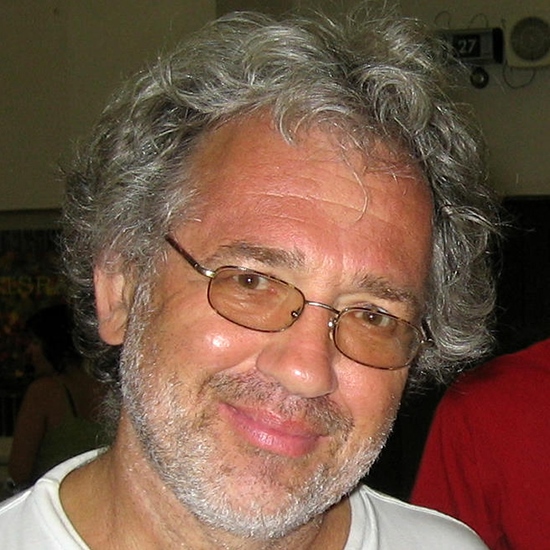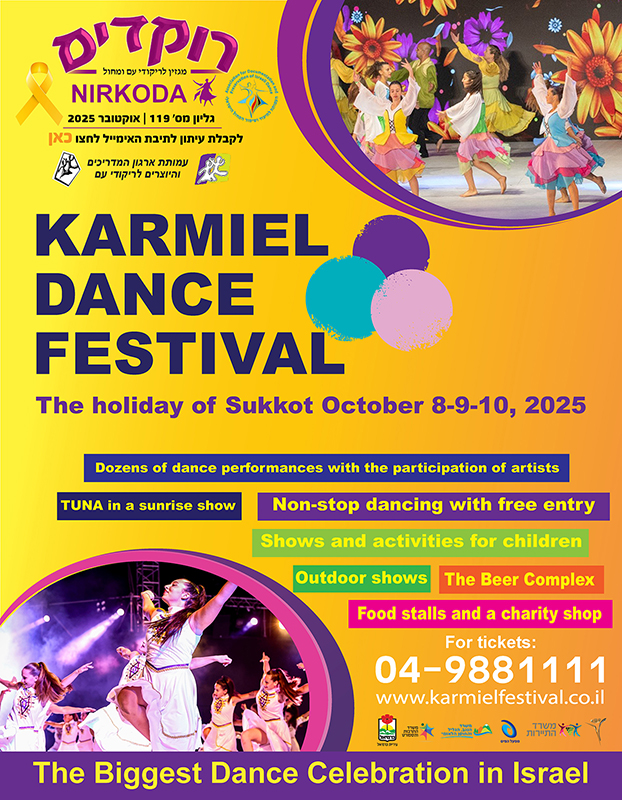- Home
- Rokdim Nirkoda 119
- The Yemenite Roots of Israeli Folk Dance
The Yemenite Roots of Israeli Folk Dance
Seadia Amishai An expert on Yemenite dance
- Seadia Amishai passed away on July 8, 2025. In a tribute to his life, we publish this slightly revised version of an article that appeared over twenty -nine years ago in the East German periodical “Folksblatt” (no. 3/1996), after I had spoken with Seadia at his home in Hadera.
Seadia Amishai was born in 1939 in Al -Udin, approximately sixty kilometers west of the Yemeni city of Ibb. Shortly after his birth, his father died, and his grandparents took him on the arduous Aliyah to “Eretz Israel”, then the British Mandate for Palestine. A group of around twenty Jews reached the Saudi Arabian seaside city of Jeddah on foot and by donkey. They continued by boat to Egypt and finally, in 1941, they took a train from Alexandria to Atlit (an important fortress of the Knights Templar in the 13th century). The journey, which today would take around two days by car, took them over three months.
An uncle finally drove the group to Hadera. There, Seadia attended a religious elementary school. After his mother and sister joined the family in 1950, he transferred to a yeshiva (a high school for Jewish studies) in Kfar Ganim near Petah Tikva. As a teenager, in 1952 he joined the religious Kibbutz Sde Eliyahu, founded by German Jews in 1939, located south of the Sea of Galilee. There he became a driving force in the kibbutz’s cultural arena by organizing the entertainment portion of weddings as a solo singer of Yemenite song and as a choreographer of recreational performances featuring dances with Yemenite costumes. During this period, he attended a dance course for youth leaders led by Rivka Sturman.
At the end of 1959, after Seadia completed his mandatory three-year military service in a paratrooper battalion, he was temporarily entrusted with the management of a small provincial hospital, the municipal clinic of Kiryat Shmona in the far north, as a hospital administrator. What was originally intended to be a one-year commitment eventually turned into twenty years. On the side, he began to build an Israeli folk dance infrastructure. Thus, he ended up teaching classes not only in Kiryat Shmona, but also in Afula, Tiberias, and Metula, and from 1967 onward, in various settlements in the Golan Heights. In short, he was soon teaching a class nearly every evening.
A few years later, he decided to attend the ulpan in Rosh Pina under the direction of Tamar Alyagor, although, as Seadia expressed, the practical experience he had acquired in the previous years had long since overtaken the theory of the course content. For him, however, every certificate was a “valuable piece of paper”; one never knew what one might need it for. And dance instructors in Israel were usually ulpan graduates, at least in the years back then, as he remarked somewhat tartly.
Further stages of his education included the College of Tel Chai, Beit Berl, and the University of Haifa, where he earned his degree. His career saw a turning point in 1979 when he received a position at Pardes Hanna Hospital, in the immediate vicinity of Hadera, the city where he spent his early youth. In order not to cause disruption in the established dance scene in and around Hadera, he refrained from establishing any new evening classes – with the sole exception of Pardes Hanna. Instead, he attended existing courses to demonstrate and perform his own choreographies. Moreover, he was so busy with his new full -time job – not to mention his family life (Seadia is married and has three children) – that he found virtually no time for a more extensive, regular hobby like folk dancing.
In the early 1960s, Seadia created his first dances for the general dance community. Well-known dances such as “Bo Iti el Hagalil” (1969), “Hora Galil” (1960), and “Adama Admati” (1957) were originally conceived for the stage and at the request of various parties, only then simplified and adapted for dance sessions. His goal was, on the one hand, to incorporate dance elements and movements into the lyrics of a song; the music itself more or less only provides the rhythm or, at best, the rough character of a dance. On the other hand, he wanted to use typical Yemeni dance elements in a way that would make them accessible to a wider dance audience, as in the couple dances “Mi Li Yiten” (1962) or “Pizmon Ha’aguda” (1975), but above all, as a practical prototype, in “Bisabesi” (1972): The song tells the story of a young farmer who waters his pepper bushes (in Arabic: Basabisi) in a valley almost every day and regularly meets a beautiful young woman he admires. Seadia’s dances are documented on the “Rokdim” website and can be viewed here. Finally, he strove to focus on simple dance elements and sequences, in stark contrast to more recent choreographies, which, according to Seadia, rather tend to confuse the wider dance public.
According to Seadia, of the approximately thirty dances he has introduced, around two -thirds are still danced today. A few years ago, he decided to stop choreographing new dances. Not that he is out of ideas! But for the time being, he would much rather keep his ideas in a drawer than expose them to the commercialism that currently dominates the Israeli dance scene.
Today, many young choreographers are only interested in personal recognition and the associated financial success. He hopes that the time when dances were created purely for the sake of movement returns. Seadia Amishai, however, does not want to give up dancing completely, and so he still directs three Yemenite performing groups (Lehakot). They naturally dance only to live music – just as he was one of the last to switch from traditional live music to audio cassettes at folk dance evenings around 1976. Certainly, he never used the records that became popular in the mid-1960s, especially in the USA.
He also criticizes the distance from the dancers that many new dance instructors keep; they function more as disc jockeys rather than actively participating in the dances themselves. In his opinion, a dance evening should be led from within, meaning the dance instructor should primarily be among or part of the dancing audience. His musical talent was certainly helpful in putting this aspiration into practice. He plays various instruments, including the mandolin and flute, but even a tambourine could be a good start, according to Seadia.
Seadia is a member of the “Association of Israeli Dance Instructors” (Irgun Hamadrichim), but due to lack of time, he is not currently actively involved. Also, for health reasons, Seadia currently feels somewhat limited in his dancing. Despite everything, he remains true to his principles of promoting Israeli dance with a special emphasis on Yemenite dance elements. Today, this is realized through his work with the performing groups “Lehakat Ha’Machol Carmel Menashe” (Carmel Menashe Dance Troupe), which was subsequently taken over by Shlomo Maman, and “Pirchei Teiman” (The Flowers of Yemen).
Ultimately, he cannot name a favorite among his own dances, as each of his dances has a slightly different meaning, so there are several that, in his opinion, deserve the rating “very good.”
Asked about his surname, Seadia explained that, due to the Hebrew consonantal script, there are various versions, the most common being Amishi or Amishai; however, with a reference to the Hebrew root ﬠמשׂ (ayin-mem-sin), he clarifies that his surname should actually be Amisai. Now that it has been clarified how Seadia correctly pronounced his surname, the question naturally arises as to how the Israeli dance public will adopt this new knowledge: Will they stick with the previous pronunciation or will they adopt the new one?
Alongside Seadia Amishai we can mention Moshiko Halevy, Israel Yakovee, and certainly others who had significant Yemeni influences on the development of Israeli folk dances. In his article, “Yemenite Jewish Elements in Israeli Folk Dances” (ROKDIM 56, July 2001, p. 43), Dan Ronen notes: “The elements of the Yemenite dances that influenced Israeli dances were only those that conformed with the frame and ideological needs of the Israeli folk dances. [For instance,] such components as the separation between men and women or the ability of the dancers to improvise (…) were not internalized”. And looking back – the most important dance element we received from Yemen is what we call today the “Yemenite step”.
Without a doubt, the Israeli dance scene would be poorer in several areas without Seadia’s Yemenite engagement in introducing Yemeni elements. The total number of his choreographies is easily manageable, reflecting a pleasant modesty.
Above all, his dances clearly and unequivocally demonstrate what a “Yemenite step” truly is and should be in Israeli folk dance.









Comments
התראות